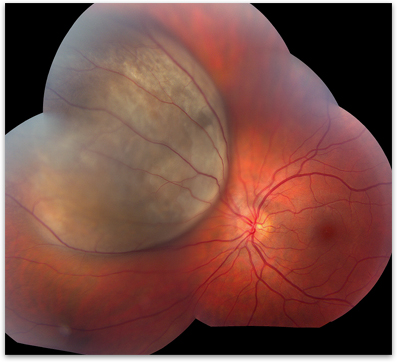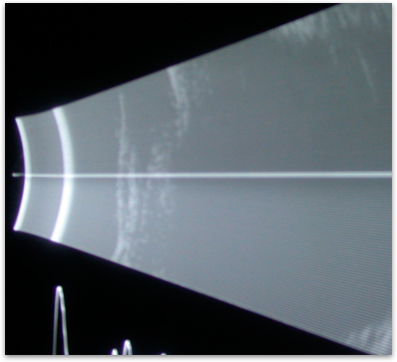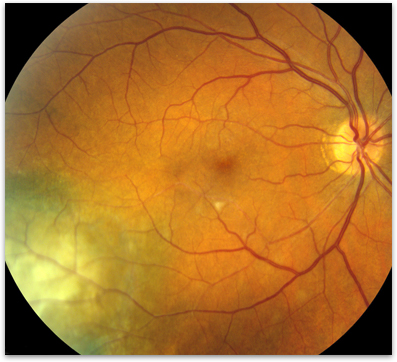Choroidal Melanoma
What is a Choroidal Melanoma?
A melanoma is a type of cancer that results in the unregulated growth of the pigmented cells in the body called melanocytes. Melanomas can occur anywhere in the body where these pigmeted cells exist, including inside of the eye. Melanoma can occur in several areas of the eye including the iris, ciliary body, and choroids (figure 1).
What Causes a Choroidal Melanoma and who is at risk?
Choroidal melanomas are very rare, occurring in only about 6 people out of every million every year. Choroidal melanoma is the most common type of cancer to affect the eye in adults. The cause of melanoma is unknown. It most commonly occurs in mid-life and occurs equally in men and women. Caucasians are more likely to develop choroidal melanomas when compared to other groups. People with exposure to intense UV light (such as arc welders) have a slightly increased risk, but there are no other known environmental risk factors. Most commonly the melanoma grows from a pre-existing nevus (mole) in the eye.
What are the symptoms of a Choroidal Melanoma?
The symptoms associated with a chroidal melanoma depends on where in the eye the melanoma beings to grow. In some cases there are no symptoms at all and the tumor is detected only on a routine examination. In some people a melanoma can cause blurred vision, flashing lights, floaters, or rarely pain.
How is a Choroidal Melanoma diagnosed?
A choroidal melanoma is diagnosed through a dilated examination of the eye. Specialized testing is often used to confirm the diagnosis and evaluate the extent of damage to the retina. A photographic dye test called a fluorescein angiogram can be used to assess the blood supply to the melanoma and look for any damage to the retinal blood vessels. Optical coherence tomography (OCT) is used to obtain a high-resolution anatomic scan of the retinal structure to look for damage. Ultrasound is used to measure the size of the tumor and look at its internal characteristics.
How is a Choroidal Melanoma treated?
The main goal of treatment is to try and save a patients life. Treatment is also aimed at trying to save the eye and help preserve as much vision as possible. There are many different treatments available. Treatment mainly depends on the size and location of the melanoma. In some cases if the melanoma is very large the only treatment is to remove the eye. With smaller melanomas the goal is to locally treat the melanoma while sparing the eye and possibly vision. The mainstay of localized treatment is radiation (figure 3). In some cases laser can be used in conjunction with radiation to stabilize the melanoma.
What is my prognosis?
The prognosis depends on many different factors including the size and location of the melanoma, what type of cells are in the tumor and the genetics of the tumor. A choroidal melanoma can cause loss of vision. In about 20% of cases it can spread outside of the eye (metastasizes) and cause serious health problems or death. For most patients the melanoma does not spread outside or the eye and if diagnosed and treated early the chances of survival are excellent.
How Can I Learn More About Choroidal Melanoma?
The National Cancer Institute has excellent information.

Figure 1. Choroidal melanoma.

Figure 2. Ultrasound of a choroidal melanoma.

Figure 3. Appearance of a choroidal malanoma after radiation treatment.

